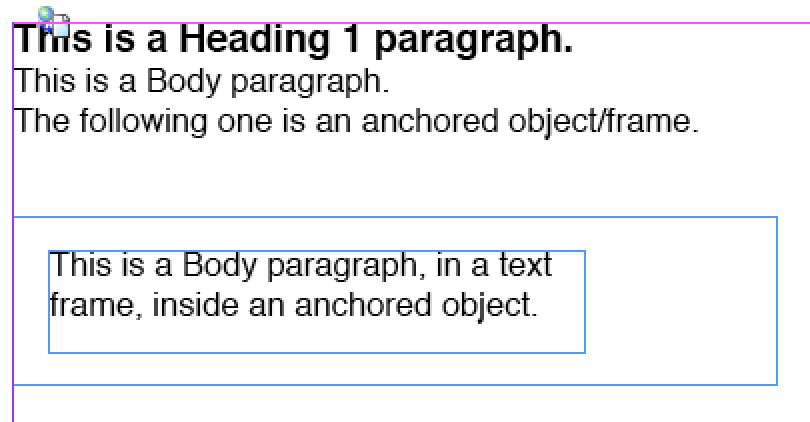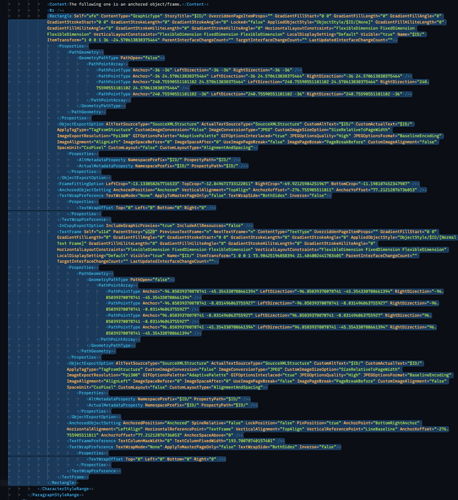Understood! I guess what I was trying to get at though is that even in traditional publishing, where output is relatively static and revisions infrequent, you need automation. No publishing house is going to spend weeks on each book laboriously turning a TNR 12pt DOCX file into a hard cover form factor and then turn around and do another layout by hand to mass trade or whatever.
I do know where you are coming from and what you’re trying to do, and I believe the problems we face, as people producing many frequent revisions to a complicated document, and with higher standards than accepting what the macOS/Qt PDF printer with simplistic formatting can afford, is not too dissimilar to the more static publishing model. I.e. making one single book dozens of times isn’t terribly different, mechanically speaking, from making dozens of books once or twice.
So there is something to be learned from the field, and more importantly what can be expected from the software in the “12pt TNR” arena, like Scrivener and Word, even if the spread of how it is meant to be used is different.
This is something that seems to work as is for producing ebooks. I suspect it may work for web help, using the .html files generated for the ebook.
Ebooks can get away with it because they are little more than self-contained static, and fairly basic (like 1999 levels of basic), web pages running in a very stripped down specialised browser. That’s simple, in terms of the technology cap, and there are good frameworks for producing these basic HTML and CSS files (with scattered XML as glue and metadata). Programmers have no end of tools there, while tools for making InDesign files are effectively zero.
Meanwhile the source material for ebooks only has to concern itself with basic instruction. There is, for example, no consideration for optimising hyphenation, worrying about page colour matters like text rivers, awkward widows & orphans; there are no master pages, no complex style sheet conversions, no objects, and little by way of sophisticated layouts, in part because your design must be flexible enough to display on a business card sized phone screen, be monochromatic enough to be legible on eInk, displayed in 52pt, etc.
Creating a static, paginated design, is always going to be a lot more complicated than piping a bunch of paragraphs through a web browser (ebook reader) and having it crudely sorting out pagination, justification and other matters on the fly. The result is uglier, but the input is simpler and making tools that produce simpler input is thus much easier to do. Creating an effective ebook generator is something one person can sit down and do in a few months. Hell, a person with web design background can sit down in a coding editor and make an ebook from scratch at nearly the same speed it takes them to write the book, it’s so simple…
Anyway, sorry to get a bit abstract in the thread, but it seemed all right considering a broad topic like Scrivener to ICML, or really any publication medium. I think it is okay to accept that without considerable automation or considerable manual labour, expecting a miracle conversion system isn’t realistic at this point in time, and maybe never will be, considering the conceptual (let alone technical) problems with doing so.
@nontroppo : I think ultimately this really does force you to using something like PrinceXML or LaTeX rather than a GUI app, where you have much more precise control given these tools use text-specified layouts (HTML+CSS or TeX).
I couldn’t agree more, because what is interesting about these particular approaches is that we are moving the very difficult page layout problem into a space that much more closely resembles the much easier ebook design approach. While LaTeX has less support than HTML+CSS, it’s straight-forward enough that even a Scrivener project template can be set up to generate it—and both of the major Markdown conversion tools have excellent support for it.
It’s also interestingly conducive to final polishing right in Scrivener. I can spot a problematic justification solution in the output PDF and insert the overrides I might need. Perhaps I’ll force hyphenate a word or force a line break. That’s the kind of thing you’d generally have to manually proof the PDF for every single time you compile, with an eagle eye and an ever growing checklist, to fix in a traditional DTP workflow. But with a text-based workflow I just plug the \\ code or whatever into the text editor and I’m done forever with that problem line.
With a platform such as that, one is much closer to pure one-click compile automation in theory and practice, than I think they could ever be with the GUI-tool approach, with all of the proprietary and complicated file formats that come along with it.

